-
solutinos
-
Hire
Frontend Developer
Backend Developer
-
NodeJS Developer
-
Java Developer
-
Django Developer
-
Spring Boot Developer
-
Python Developer
-
Golang Developer
-
Ruby on Rails Developer
-
Laravel Developer
-
.NET Developer
Technology
-
Flutter Developer
-
React Native Developer
-
Xamarin Developer
-
Kotlin Developer
-
Cross-Platform Developer
-
Swift Developer
-
MongoDB Developer
-
C Developer
-
Smart Contract Developers
Cloud
-
-
Services
Mobile Development
Web Development
- Work
-
Multi Services App
-
Food Delivery App
-
Grocery Delivery App
-
Taxi Cab Booking App
-
Multi Services App
-
OTT Platform APP
-
Social Media APP
-
Freelance Service App
-
Car Rental App
-
Medicine Delivery App
-
Liquor Delivery App
-
Sports Betting App
-
Online Coupon App
-
eLearning App
-
Logistics & Transportation App
-
Courier Delivery App
-
On-Demand Real Estate App
-
E-Wallet APP
-
Online Dating App
-
Handyman Services App
-
-
Process
-
Company
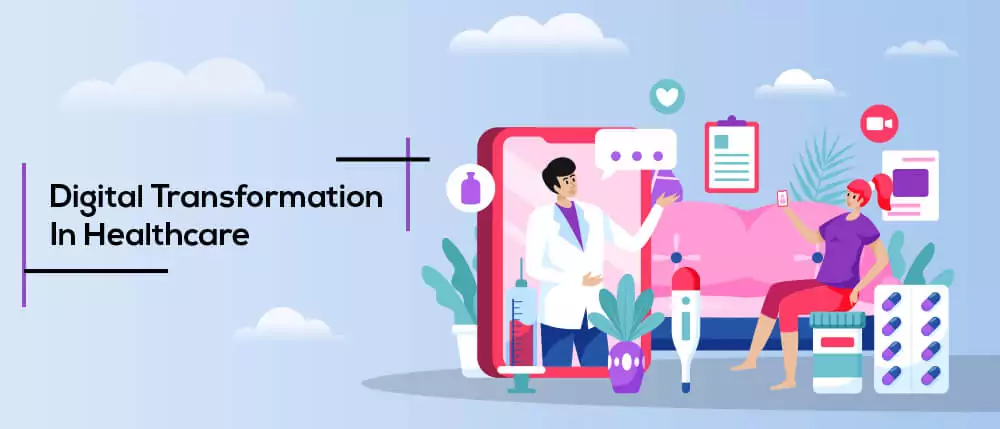
Did you know that 93% of the doctors out there find it valuable to connect a healthcare app to Emergency Health*?
Yes, and we will come back to it late.
It would be hard to imagine a world without healthcare technology. Considering the pandemic, we have been enduring for quite a while, visualizing a world without healthcare technology sounds either too implausible or too scary. For those of you who didn’t know, it is because of the role of information technology in healthcare that we were able to sequence the genome of Covid-19 in a very short span of time.
But this was not the case with the outbreak of SARS, where it took years for researchers to sequence the virus in the lab. All the potential candidates of vaccines for Covid-19 we are testing in labs around the world are due to the onset of some of the most powerful technological concepts post the Big Data era.
Ever since Big Data simplified the process of generating, gathering, storing, processing and retrieving data in massive chunks possible, we have been able to bring back one of the oldest concepts in the information technology sector back into business. We call this artificial intelligence.
Introduced as early as the 50s, artificial intelligence has been prevailing for decades on paper but its practical implementations and commercial applications have been made possible only since the last decade. And with artificial intelligence came its subsets – machine learning and deep learning, which are further propelling innovation and advancements in the healthcare sector.
In short, what we are today, how we live, our health – both physical and mental – are all in safe hands because of innumerable digital transformations that have happened over the last two decades.
And this guide is all about helping your healthcare business understand the importance and prominence of healthcare technology and give you extensive ideas on how you can do away with obsolete concepts in your organizations and welcome digital equipment and systems that will help you deliver better services.
Let’s get started.
Current Overview Of Healthcare
According to a report from Centres for Medicare and Medicaid Services, the US spent close to $3.3tn on healthcare in the year 2016. This increased by approximately 4.6% and 5.3% in 2017 and 2018. Besides, administrative expenses account for the majority of spending in healthcare in the USA. This is close to 8% of the country’s GDP, which is over $1845tn (based on 2016 data).
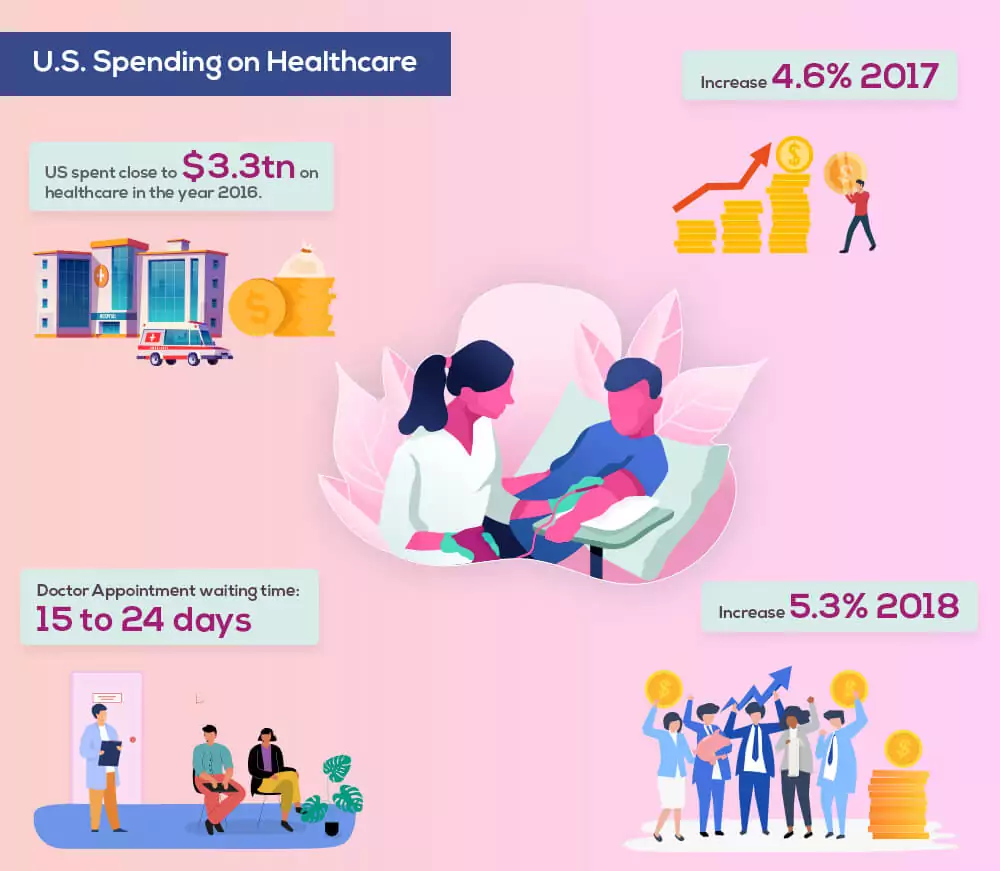
The healthcare system in America is also plagued by the concern of inflated prices of pharmaceutical products, which results in increased healthcare expenses. An American pays thrice the amount for 20 top-selling medications around the world when compared to the citizens of the UK.
The wait time in the US is also a major concern in patient care, where you need to make an appointment at least 15 to 24 days prior to visiting them. Probably, this is why Americans visit their doctors significantly a lesser number of times than other people across the globe. An average American visits their physician only 4 times a year compared to a Japanese, who visits approximately 12.9 times.
Even if you managed to visit your doctor after being patient (pun not intended) for weeks, the time you would spend with your doctor is very, very less. An ophthalmologist spends anywhere between 9 and 12 minutes and a cardiologist spend anywhere between 13 and 16 minutes with their patients.
All these are negatively influencing the only one significant element that matters to us as humans – our health. No matter if it is a genetic disorder, an acute or a chronic ailment, everyone deserves top-notch patient care, diagnosis and treatment. However, these are the trends and scenarios prevailing for the last couple of years in the healthcare sector.
With hospitals and organizations still implementing obsolete techs in their processes and systems, they are taking an immense toll on the life and livelihood of the people.
This definitely calls for a change in the healthcare sector. A change that permanently transforms analogue and age-old systems of patient care and service delivery modules to state-of-the-art technology concepts that put healthcare back in the hands of patients.
Not everything is grim and gloomy in the sector as there have been several transformations happening in the sector across the globe. Technologies like Electronic Health Records (EHR), chatbots, artificial intelligence, robots, data science, Internet of Medical Things, wearable devices and more are increasingly being implemented and resorted to by healthcare companies to optimize patient care.
Let’s take a quick look at how this transformation is happening in numbers.
Digital Healthcare Statistics
Let’s start with the basics. One thing that makes us feel empowered today is our smartphone. A treasure-chest of information about our lifestyle and interests, a smartphone is also a vault of insights on our hygiene and health. 91% of us adults have our phones within our reach and app developers and companies have been swift in identifying use cases of smartphone applications for health and roll them out for our benefits.
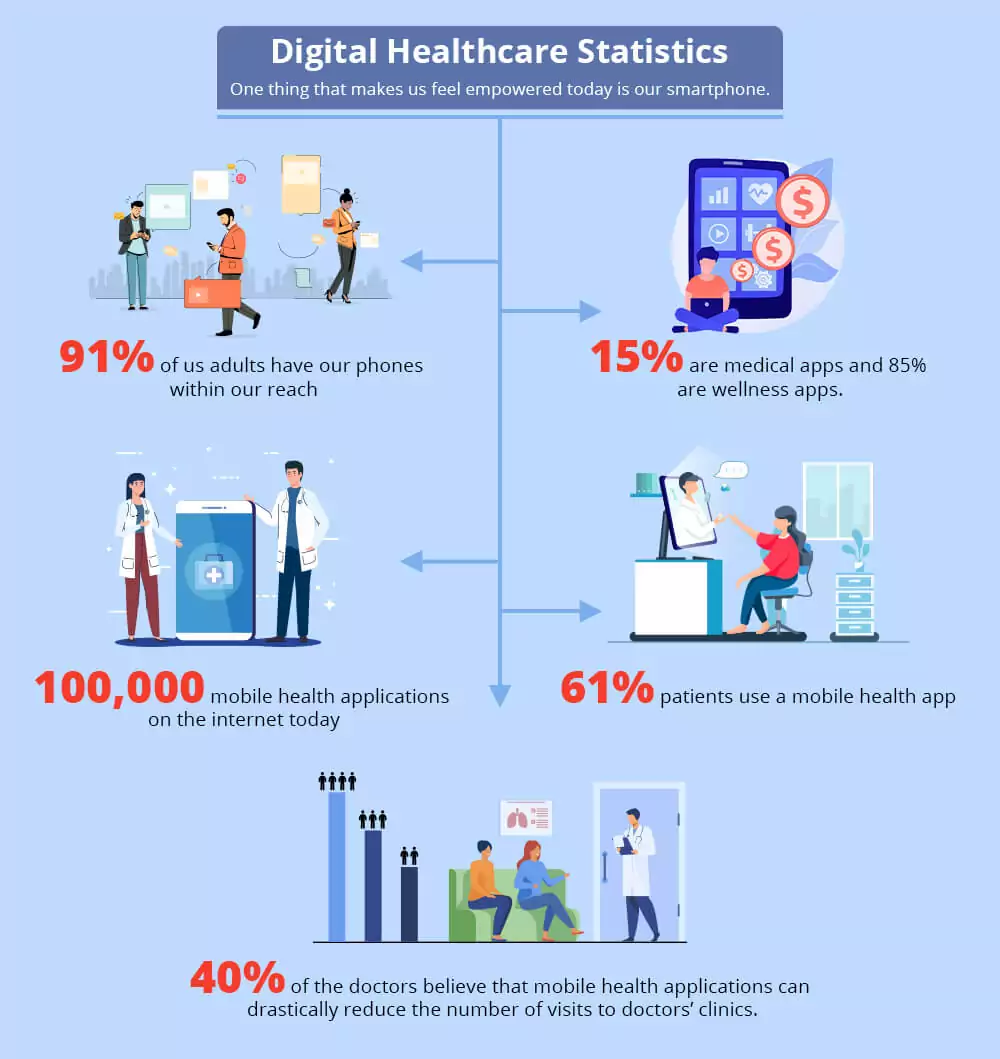
For starters, let’s understand that there are over 100,000 mobile health applications on the internet across diverse app stores today. Out of the 100,000, over 15% are medical apps and 85% are wellness apps.
Over 61% patients use a mobile health app and over 40% of the doctors believe that mobile health applications can drastically reduce the number of visits to doctors’ clinics.
Well, the point is not just about mobile health applications. It’s just the starting point into the world of healthcare technology that is full of surprises and innovations. We will see the implementations of diverse tech concepts in this sector in the coming chapters but what we want you to understand as of now is that healthtech is acting as a catalyst in treating and diagnosing diseases and optimizing service delivery today.
Diverse segments are being positively influenced by healthcare technologies and let’s take a quick look at them to further understand the perspectives from different stakeholders in the sector.
Segments in Healthcare
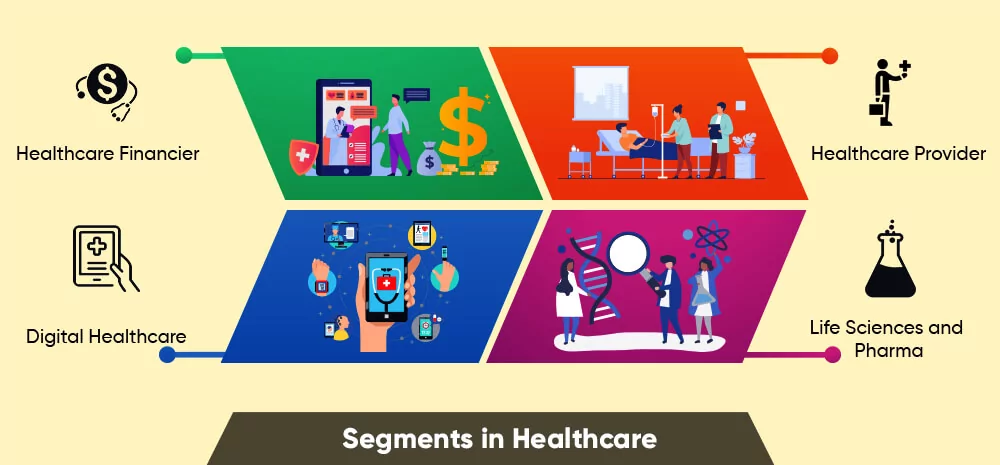
To understand the segments better, let’s classify the segments into four:
- Healthcare Financier
- Healthcare Provider
- Life Sciences and Pharma
- Digital Healthcare
One of the most indispensable sectors in healthcare is the financial sector that makes healthcare more accessible to people. This segment comprises of companies and businesses in the finance spectrum such as:
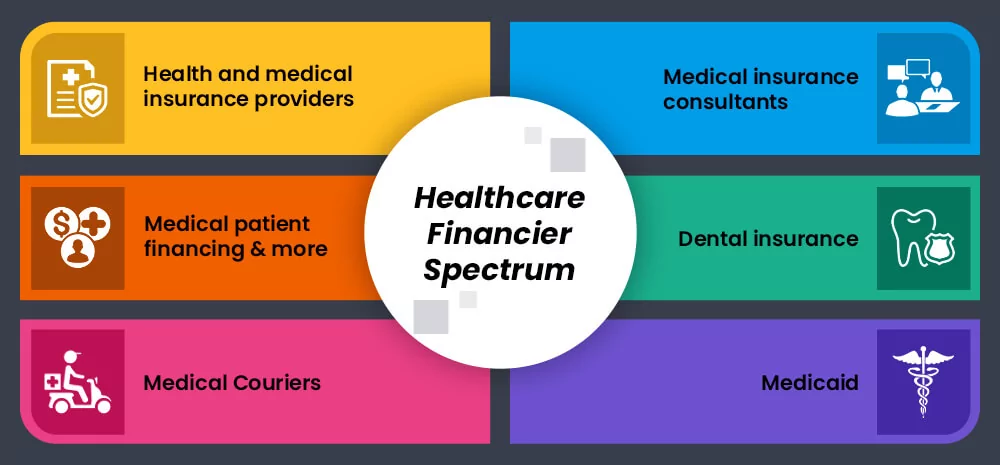
- Health and medical insurance providers
- Medical insurance consultants
- Dental insurance
- Medicaid
- Medical Couriers
- Medical patient financing and more
They are the segments that bridge the gap between doctors and patients and make the prevalence of medical devices, insurance policies, systems, diagnostic services and surgeries more meaningful. This segment comprises of:
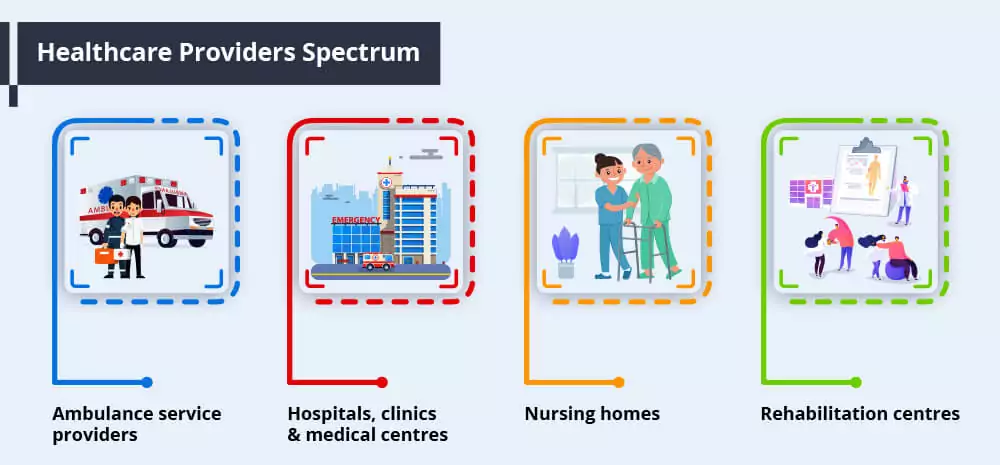
- Ambulance service providers
- Hospitals, clinics and medical centres
- Nursing homes
- And Rehabilitation centres
The ones that are responsible for studying viruses, pathogens, antibodies, sequencing and more and preparing appropriate antidotes, medications and treatments includes divisions like:
- Generic drugs
- Prescription drugs
- Supplements and vitamins manufacturing
- Health stores
- Biopharmaceutical drugs
- OTC drugs and stores and more
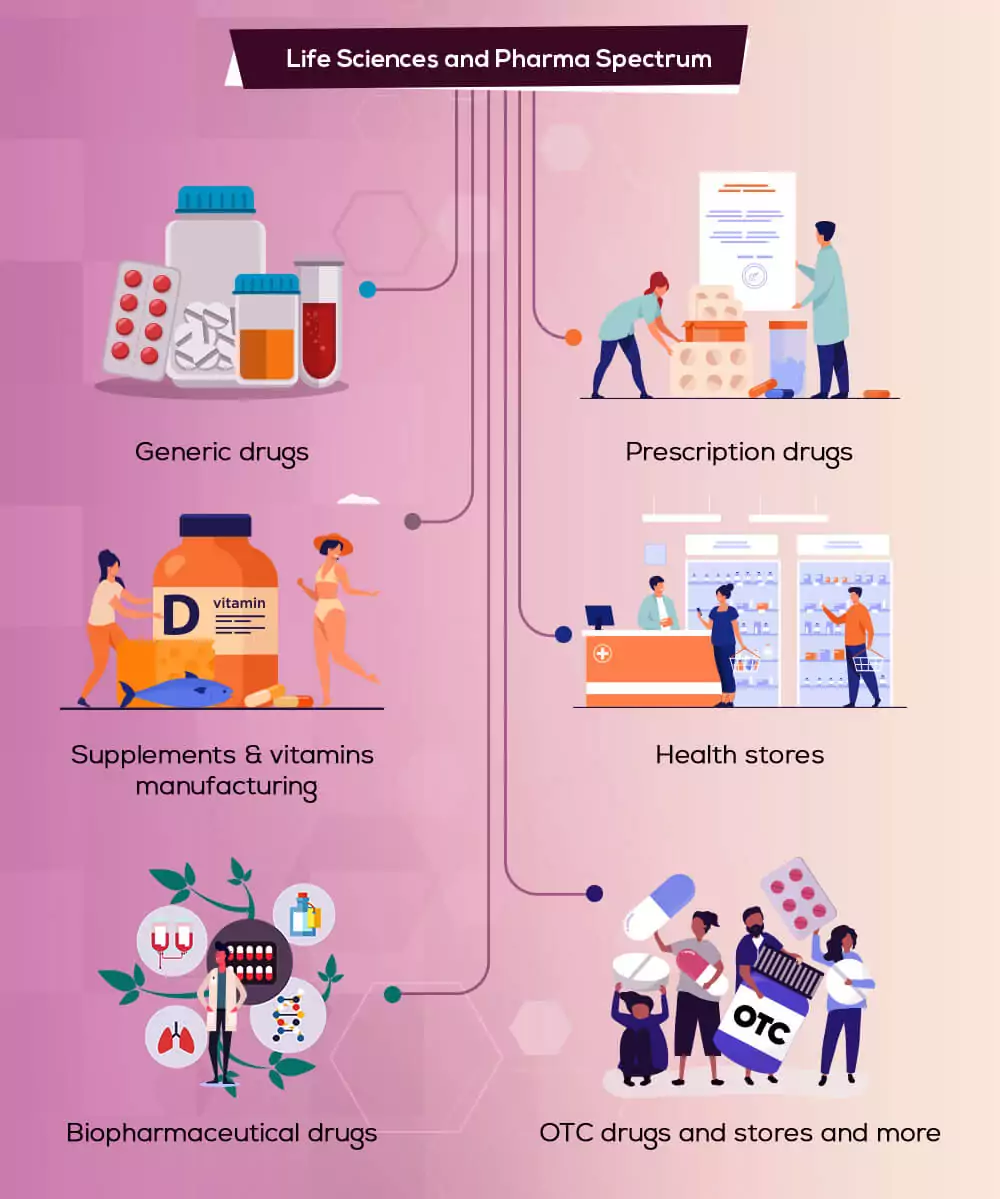
The newest kid on the block, digital healthcare is the offspring of advanced technologies and the evolution of equipment required for their practical implementations. This is a revolutionary segment in the healthcare sector as it is redefining the ways healthcare works across the globe. Digital healthcare is touching and influencing all the previously mentioned wings and rewriting conventions. This segment includes:
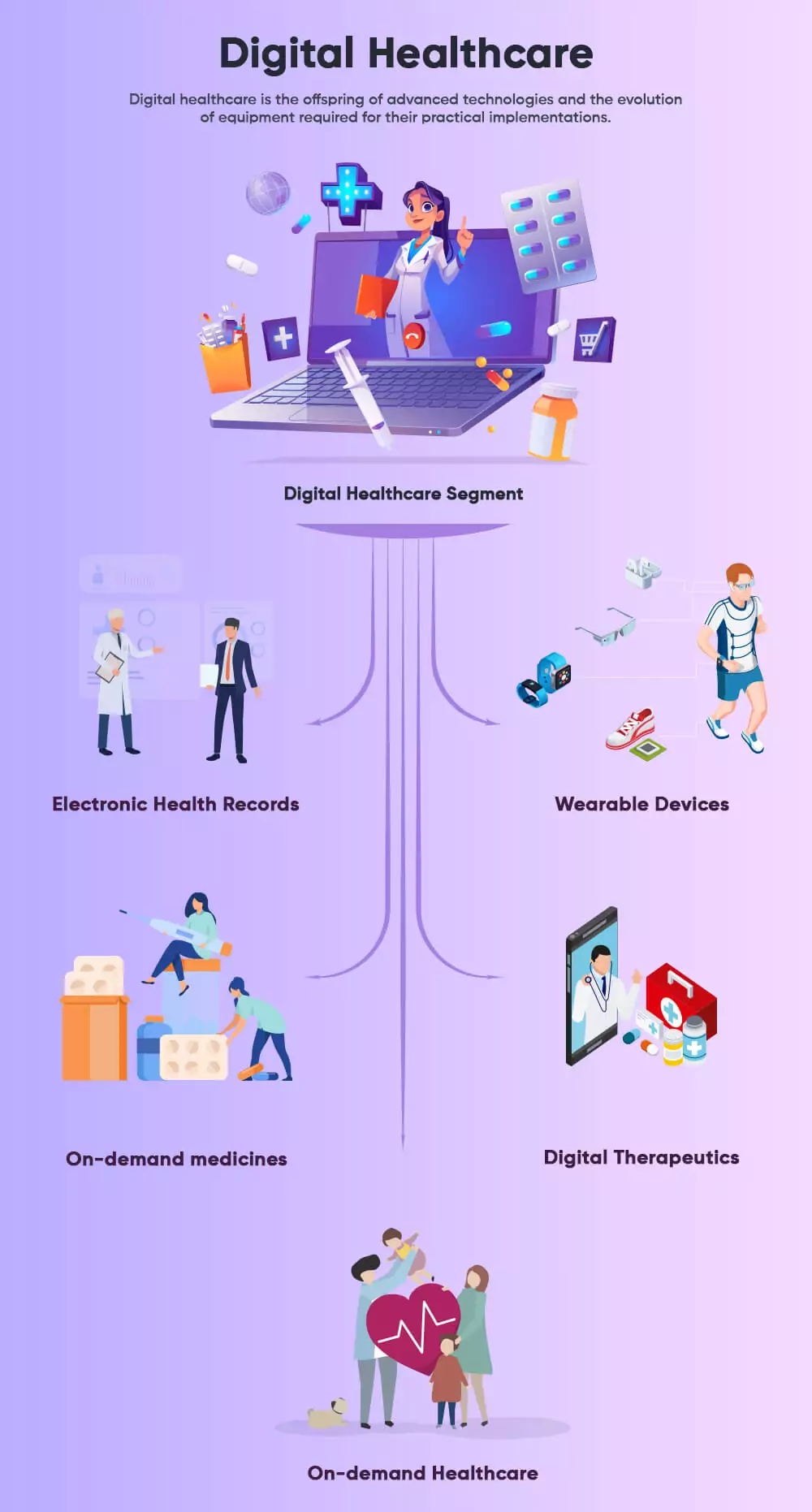
- Digital health such as electronic health records, wearable devices and more
- Digital medicine such as on-demand medicines, simulation of medicine compounds and their effects on bodies and more
- Digital Therapeutics such as complementary practices to medical treatments, incorporation of medical best practices and more
- On-demand healthcare – the most promising healthcare wing that has proven to be beneficial in times of global viral outbreaks
The future not just looks promising for digital healthcare but looks strong and irreplaceable. We have always known that well-defined, designed and trained systems can replace human interventions and this is exactly what’s happening in the healthcare sector. With the implementation of healthcare technologies, we are not only eliminating errors but optimizing the entire system of healthcare – from diagnosis and treatment to post-treatment patient care -as well.
When we have to talk about the future of healthcare technology, we can summarize it into four major wings
- Blockchain
- IoT and Wearable tech
- AR/VR
- And Artificial Intelligence
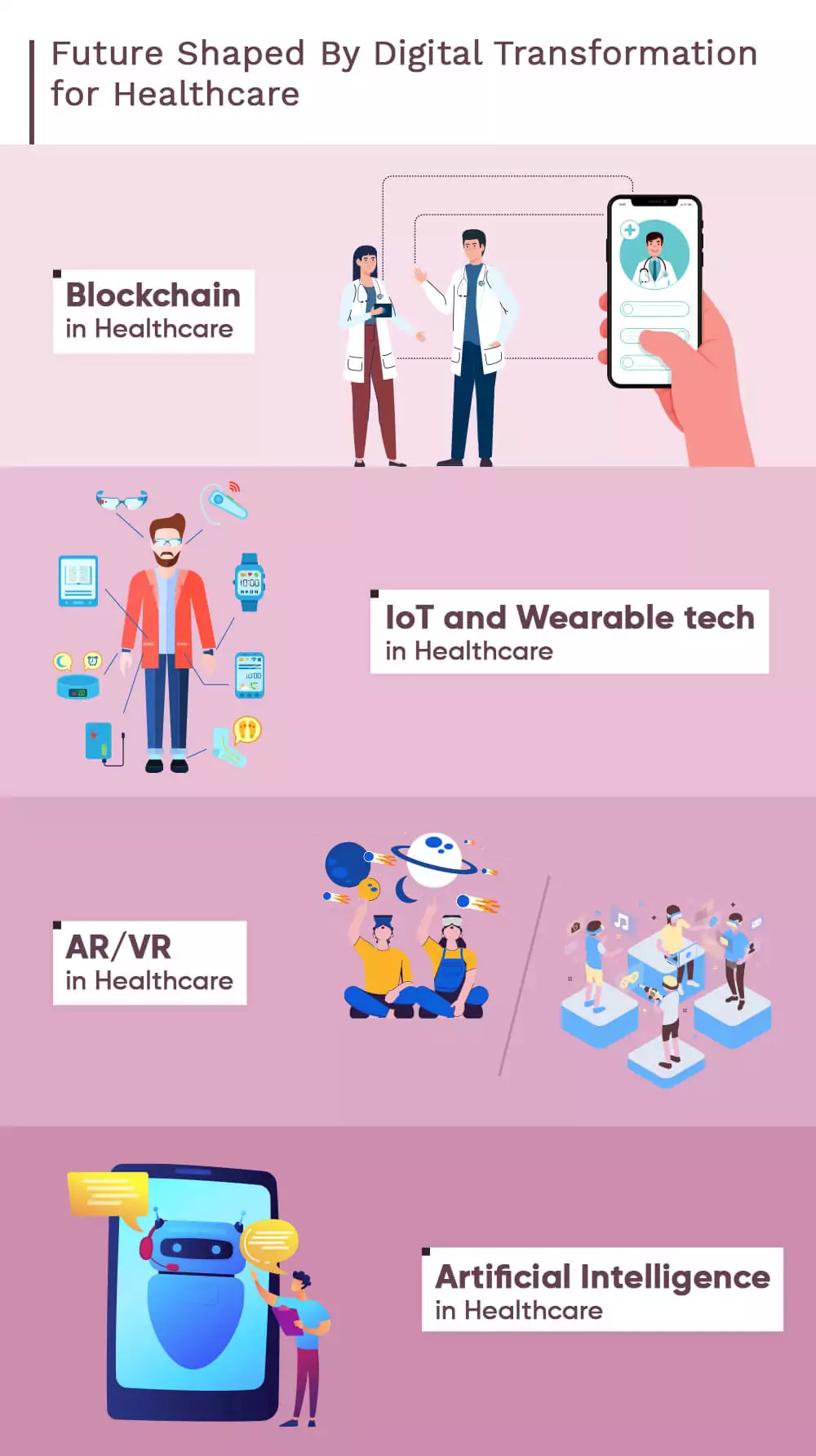
Blockchain
Remember the healthcare financiers segment we mentioned earlier, they are the most benefited segments in healthcare by blockchain technology. Something which is decentralized, peer-to-peer and unauthoritative, blockchain is here to revolutionize insurance and healthcare finance companies by strengthening their internal systems and making processes more airtight and transparent.
Over 80% of the people out there are willing to sport a wearable device. From monitoring our vitals to even predicting heart attacks, today’s wearable devices are designed and built for fundamental healthcare. The research and development have reached to the extents that Internet of Medical Things and wearable medical devices are genuine concepts. There are devices:
- Track your foot steps
- Monitor heart rates
- Detect atrial fibrillation
- Self-adhesive biosensor patches and more
AR and VR
Two of the most underrated technologies are here to make diagnosis sharper and more insightful. Over 93% radiologists have agreed that viewing 3D rendered images through virtual reality systems have allowed them to be more confident in their diagnosis and treatments. Besides, these technologies are assisting in pain management, teaching, live observation of surgeries, exposure therapy and more.
Enough has already been written and said about the role of artificial intelligence in healthcare on the internet. With the power of data, this concept has allowed medical practitioners and systems to predict hereditary diseases, the onset and spreading of cancers, predict strokes and eye disease, optimized diagnosis, clinical decision support, disease management and more.
With these, there is no doubt that our health and wellness are in safe hands.
We hope we didn’t bombard you with too much information right from the start. There are so many things happening in this sector and if all this seems new to you, it’s probably a sign for you to start exploring digital transformations for your healthcare venture.
For that, keep watching this space as we bring to your screens more extensive information on how you could go about implementing digital strategies for your venture in the coming weeks.
Stay tuned.